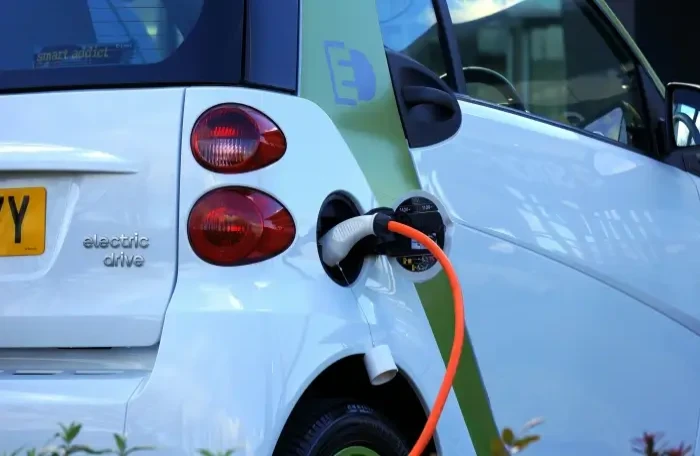Top 6 Challenges Facing EV Manufacturers and Shippers

Lila Claybourne
Aug 30, 2024

Summary
Battery Technology and Supply Chain Issues: The challenges of sourcing raw materials, developing advanced batteries, and transporting these heavy components safely and efficiently.
Charging Infrastructure Development: The need for a widespread, efficient charging network and the logistical hurdles of setting up charging stations.
Regulatory Hurdles and Compliance: Navigating the complex, evolving regulations in different markets and the impact on international shipping.
Cost Management and Pricing Pressures: Balancing high production costs with affordability, and the effects on logistics and shipping costs.
Consumer Acceptance and Market Competition: Overcoming consumer hesitance, competing with traditional vehicles, and the role of shipping in shaping consumer perceptions.
Environmental and Sustainability Concerns: Addressing the environmental impact of EV production, shipping, and end-of-life disposal, and the importance of sustainable practices throughout the supply chain.
Top 6 Challenges for EV Makers & Shippers
Electric vehicles (EVs) are at the forefront of the future of transportation, promising to reduce carbon emissions and lessen reliance on fossil fuels. As governments push for greener alternatives and consumers become more environmentally conscious, the EV market has seen unprecedented growth. However, the transition to electric mobility is not without its challenges as both EV manufacturers and shippers face a range of obstacles that could slow the adoption of electric vehicles or affect their long-term viability.
In this article, we will explore the top six challenges faced by EV makers and shippers, providing a detailed analysis of each issue and discussing potential strategies to overcome them. From the complexities of battery technology to the environmental impact of the entire EV lifecycle, these challenges highlight the multifaceted nature of the electric vehicle industry. Whether you're an industry insider or simply interested in the future of transportation, understanding these challenges is crucial.
Challenge 1: Battery Technology and Supply Chain Issues
The Core of EVs: Advanced Battery Technology
At the heart of every electric vehicle is its battery—a component that determines the vehicle's range, performance, and overall cost. Developing advanced battery technology is one of the most significant challenges facing EV manufacturers today. The most common type of battery used in EVs is the lithium-ion battery, which offers a balance of energy density, safety, and cost-effectiveness. However, producing these batteries at scale presents several hurdles.
Dependence on Rare Earth Materials
Lithium-ion batteries rely on materials like lithium, cobalt, nickel, and graphite, which are often referred to as "rare earth elements." Despite the name, these elements are not necessarily rare in terms of availability, but they are difficult and expensive to extract and refine. Moreover, the mining of these materials often occurs in countries with unstable political climates, such as the Democratic Republic of Congo (for cobalt) and Bolivia (for lithium). This geopolitical instability can lead to supply chain disruptions, causing price fluctuations and potential shortages.
Supply Chain Vulnerabilities
The global supply chain for these materials is complex and fragile. Any disruption, whether due to political unrest, environmental regulations, or labor strikes, can have a ripple effect across the EV industry. For instance, the COVID-19 pandemic highlighted the vulnerabilities in global supply chains, leading to delays in the production and shipment of raw materials necessary for battery manufacturing. In response, some automakers have begun to explore alternative battery technologies, such as solid-state batteries, which promise greater efficiency and safety but are still in the early stages of development.
Challenges in Shipping and Logistics
Once batteries are manufactured, they need to be transported to assembly plants and, eventually, to dealerships or directly to consumers. Shipping these batteries is not a straightforward task. They are heavy, often weighing hundreds of pounds, which increases transportation costs. Additionally, lithium-ion batteries are classified as dangerous goods due to their potential to catch fire or explode if damaged. This classification means they must be handled with care, following strict safety regulations that can complicate logistics.
For shippers, the challenges include ensuring that the batteries are stored at the correct temperature, preventing physical damage during transit, and complying with international regulations on the transportation of hazardous materials. The cost of shipping these batteries is further inflated by the need for specialized containers and the limited availability of suitable transport options.
Future Outlook
As the demand for EVs grows, so too does the pressure on the battery supply chain. To mitigate risks, automakers and battery manufacturers are investing in vertical integration—securing their own sources of raw materials and establishing production facilities closer to key markets. Additionally, advances in recycling technologies could help reduce the dependence on newly mined materials by reclaiming valuable elements from used batteries.
Challenge 2: Charging Infrastructure Development
The Backbone of EV Adoption
One of the most significant barriers to widespread EV adoption is the availability of charging infrastructure. While traditional vehicles benefit from a well-established network of gas stations, EVs require an entirely new infrastructure of charging stations, capable of delivering electricity to vehicles quickly and efficiently. Without a robust and reliable charging network, potential EV buyers may hesitate to make the switch, fearing they will be stranded without a place to recharge—a phenomenon known as "range anxiety."
Current State of Charging Infrastructure
As of 2024, the availability of charging stations varies widely depending on the region. Urban areas and affluent regions tend to have better coverage, while rural areas and developing nations often lack sufficient infrastructure. In the United States, for example, the West Coast and Northeast have relatively dense networks of charging stations, while the Midwest and Southern regions lag behind. Europe, particularly countries like Norway and the Netherlands, leads the way in charging infrastructure, while other parts of the world are still catching up.
The Challenge of Scaling Infrastructure
Building a comprehensive charging network is a massive undertaking that requires collaboration between governments, private companies, and EV manufacturers. Public-private partnerships are often necessary to fund the construction of charging stations, particularly in less profitable areas. Additionally, different types of chargers (Level 1, Level 2, and DC fast chargers) are required to meet the needs of different users, from those who charge their vehicles overnight at home to those who need a quick top-up on a long road trip.
For shippers, the logistical challenge lies in transporting the necessary equipment, such as charging stations and related hardware, to various locations. This task is complicated by the size and weight of the equipment, as well as the need to deliver it to sometimes remote or hard-to-reach areas. Furthermore, coordinating the installation of charging stations requires careful planning to ensure that they are set up in the most strategic locations to meet demand.
The Role of Technology and Innovation
Advances in charging technology are helping to alleviate some of these challenges. For instance, wireless charging pads, which allow EVs to recharge simply by parking over them, could reduce the need for physical charging stations in certain areas. Similarly, ultra-fast chargers that can deliver a significant amount of energy in just a few minutes are becoming more common, making EVs more convenient for long-distance travel.
However, these innovations also introduce new challenges for shippers, who must handle increasingly complex and expensive equipment. Ensuring the safe and timely delivery of these high-tech components is critical to the success of the charging infrastructure.
Looking Ahead
The future of charging infrastructure depends on continued investment and innovation. Governments and private companies must work together to fill the gaps in coverage and ensure that all EV owners have access to reliable charging options. For shippers, this means adapting to the evolving needs of the industry, finding ways to transport and install charging equipment more efficiently and sustainably.
Challenge 3: Regulatory Hurdles and Compliance
A Global Patchwork of Regulations
Electric vehicles operate in a highly regulated environment, with rules and standards varying widely from one country to another. These regulations cover a broad range of issues, from emissions standards and safety requirements to tax incentives and subsidies. For EV manufacturers, staying compliant with these regulations is a constant challenge, especially when operating in multiple markets with differing rules.
Navigating Emission Standards
Stricter emission standards globally are a major factor fueling the growth of the EV market. Governments are increasingly mandating reductions in greenhouse gas emissions, pushing automakers to produce more electric vehicles. However, these standards are not uniform across countries, and the compliance requirements can be complex and costly.
For example, the European Union's stringent CO2 emission targets require automakers to sell a certain percentage of low-emission vehicles or face hefty fines. In contrast, the United States has a patchwork of state-level regulations, with California leading the way in strict emission standards. Navigating these differing standards requires significant investment in regulatory compliance and often necessitates changes to vehicle design, production processes, and supply chains.
Safety and Certification Requirements
In addition to emissions, EVs must meet various safety standards, which can vary by region. These standards cover aspects such as crash safety, battery safety, and even pedestrian protection (since EVs are quieter and pose a different set of risks to pedestrians). Meeting these standards often requires rigorous testing and certification, which can delay the introduction of new models to the market.
For shippers, regulatory compliance is equally challenging. Transporting EVs across borders involves dealing with customs regulations, safety inspections, and environmental standards, all of which vary from country to country. For example, shipping an EV from the United States to Europe requires compliance with the European Union's strict safety and environmental regulations, which may differ significantly from those in the US. Failure to comply with these regulations can result in delays, fines, or even the impounding of shipments, disrupting the supply chain and leading to increased costs.
The Impact of Trade Policies
Trade policies, including tariffs and import/export restrictions, also play a significant role in the EV market. For instance, the US-China trade war led to increased tariffs on many components critical to EV production, such as batteries and electric motors. These tariffs raised the cost of importing these components, squeezing profit margins and complicating supply chain logistics.
Shippers must navigate these trade policies carefully, often working with customs brokers and legal experts to ensure compliance and minimize delays. This process can be time-consuming and costly, particularly when dealing with new or frequently changing regulations.
Evolving Regulatory Landscape
The regulatory landscape for EVs is constantly evolving, with governments around the world introducing new policies and standards to encourage the adoption of electric vehicles. For instance, many countries are implementing or considering bans on the sale of new internal combustion engine vehicles by certain dates, often around 2030 or 2040. These bans are intended to accelerate the transition to electric vehicles, but they also create new challenges for automakers and shippers as they adapt to changing market conditions.
Keeping up with these changes requires constant vigilance and adaptability. Manufacturers and shippers alike must invest in compliance teams and work closely with regulators to ensure that they are meeting all necessary requirements. Failure to do so can result in significant financial penalties, reputational damage, and lost market opportunities.
Strategies for Compliance
To navigate these regulatory hurdles, many automakers are adopting a proactive approach, engaging with regulators early in the process to influence the development of new standards. This approach allows them to better prepare for upcoming changes and avoid costly last-minute adjustments.
For shippers, staying compliant often involves working with specialized logistics companies that have experience in handling regulatory challenges. These companies can help navigate the complexities of international shipping, ensuring that all necessary documentation is in order and that shipments meet the required standards.
Challenge 4: Cost Management and Pricing Pressures
High Costs of EV Production
Producing electric vehicles is an expensive endeavor. The costs associated with research and development (R&D), raw materials, and manufacturing processes are significantly higher than for traditional internal combustion engine vehicles. One of the biggest cost drivers is the battery, which can account for up to 30% of the total cost of an EV. The production of batteries requires expensive materials like lithium, cobalt, and nickel, as well as advanced manufacturing techniques to ensure safety and performance.
Additionally, the development of new EV models requires substantial investment in R&D, as automakers work to improve battery efficiency, vehicle range, and performance. These costs are often passed on to consumers, making EVs more expensive than their gasoline-powered counterparts. For example, a 2023 study found that the average price of an EV in the US was around $56,000, compared to $42,000 for a traditional vehicle.
Balancing Affordability and Profitability
One of the key challenges for automakers is finding a balance between making EVs affordable for consumers and maintaining profitability. To make EVs more competitive, many automakers are investing in economies of scale, hoping that as production volumes increase, costs will come down. However, this strategy requires significant upfront investment and carries risks, particularly if demand for EVs does not grow as quickly as anticipated.
In addition to production costs, automakers face pricing pressures from competition within the EV market. Companies like Tesla, which has a strong brand and a head start in the EV market, can afford to lower prices to attract more customers. Traditional automakers, on the other hand, must juggle the costs of transitioning to EVs while continuing to support their existing gasoline-powered vehicle lines.
Logistics and Shipping Costs
The high costs associated with EV production extend to logistics and shipping. Transporting EVs from factories to dealerships or directly to consumers involves additional expenses due to the weight and complexity of the vehicles. For example, shipping an EV requires specialized equipment to safely transport the vehicle's battery, which is both heavy and sensitive to temperature and handling.
Moreover, shipping costs can be influenced by a variety of factors, including fuel prices, tariffs, and currency fluctuations. For instance, rising fuel costs can increase the price of shipping, which in turn raises the overall cost of the EV. Similarly, tariffs on imported components can add to the cost of manufacturing and shipping EVs, particularly when components are sourced from countries with which trade relations are strained.
The Role of Government Incentives
To offset some of these costs, many governments offer incentives to encourage the production and purchase of EVs. These incentives can take the form of tax credits, rebates, or subsidies, which help lower the purchase price for consumers and make EVs more competitive with traditional vehicles. For example, in the United States, buyers of new EVs can receive a federal tax credit of up to $7,500, depending on the vehicle's battery capacity.
However, these incentives are often temporary and subject to change based on political and economic conditions. Automakers must therefore plan carefully to ensure that their pricing strategies remain viable even if incentives are reduced or eliminated.
Innovations in Cost Reduction
To address the challenges of cost management, many automakers are exploring new technologies and manufacturing processes that could lower the cost of producing EVs. For example, some companies are developing solid-state batteries, which promise to be cheaper and more efficient than current lithium-ion batteries. Others are investing in new manufacturing techniques, such as 3D printing, which could reduce the cost of producing complex components.
Additionally, some automakers are exploring alternative business models, such as leasing or subscription services, which allow consumers to access EVs without the high upfront cost of purchasing a vehicle. These models can also help reduce the financial risks associated with owning an EV, such as the potential for future declines in battery performance.
Challenge 5: Consumer Acceptance and Market Competition
The Hurdle of Consumer Perception
Consumer acceptance remains one of the most significant challenges facing the EV industry. While awareness of the environmental benefits of electric vehicles is growing, many consumers are still hesitant to make the switch. Concerns about the availability of charging infrastructure, vehicle range, and the higher upfront cost of EVs compared to traditional vehicles are major barriers to widespread adoption.
Moreover, some consumers are skeptical about the long-term durability and reliability of EVs. For instance, concerns about battery degradation over time can make potential buyers wary of investing in a new technology that they perceive as untested or risky. These perceptions are often influenced by misinformation or a lack of familiarity with the benefits and capabilities of modern EVs.
Range Anxiety and Charging Concerns
Range anxiety—the fear that an EV will run out of power before reaching its destination—remains a significant barrier to adoption, even as the average range of new EVs has increased. According to a 2023 survey, nearly half of potential EV buyers cited range anxiety as a primary concern, despite the fact that most new EVs offer ranges of over 250 miles on a single charge.
This anxiety is compounded by concerns about the availability and reliability of charging infrastructure. While charging networks are expanding, they are not yet as widespread as gas stations, and charging times are generally longer than refueling a traditional vehicle. This makes EVs less convenient for long trips or for those who do not have easy access to home charging.
Competition from Traditional Automakers
The EV market is becoming increasingly competitive, with both established automakers and new entrants vying for market share. Traditional automakers, such as Ford, General Motors, and Volkswagen, are investing heavily in EV technology as they transition away from internal combustion engines. These companies bring decades of experience in vehicle manufacturing, as well as established brand recognition and extensive dealer networks.
At the same time, new players like Tesla, Rivian, and Lucid Motors are challenging the status quo with innovative designs, advanced technology, and a focus on sustainability. Tesla, in particular, has set the standard for EV performance and has built a loyal customer base through its direct-to-consumer sales model and extensive Supercharger network.
For consumers, this competition can be both a blessing and a curse. On one hand, it drives innovation and can lead to lower prices and more choices. On the other hand, the sheer number of options can be overwhelming, making it difficult for consumers to decide which EV is right for them.
The Role of Marketing and Education
To overcome these challenges, automakers must invest in marketing and consumer education to build trust and familiarity with EVs. Effective marketing campaigns can help dispel myths about EVs, such as concerns about range, charging times, and battery life. Automakers can also highlight the benefits of EV ownership, such as lower maintenance costs, reduced fuel expenses, and the environmental impact.
Shippers play a role in this process as well. The speed, cost, and reliability of delivering EVs to customers can influence consumer perceptions and, ultimately, their buying decisions. For example, long delivery times or high shipping costs can deter potential buyers, particularly in a market where convenience and immediacy are highly valued.
Incentives and Policy Support
Government policies and incentives can also play a crucial role in boosting consumer acceptance of EVs. Many countries offer tax credits, rebates, and other incentives to reduce the upfront cost of purchasing an EV. Additionally, some cities and regions are implementing low-emission zones, where only electric vehicles are allowed, further encouraging adoption.
However, these policies are not consistent across all markets, and their availability can change based on political and economic conditions. Automakers and shippers must therefore be prepared to adapt their strategies to different regions and to changes in policy.
Challenge 6: Environmental and Sustainability Concerns
The Green Promise of EVs
Electric vehicles are often promoted as a key solution to reducing greenhouse gas emissions and combating climate change. Unlike traditional internal combustion engine vehicles, EVs produce no tailpipe emissions, and their overall carbon footprint can be significantly lower, especially when charged with electricity from renewable sources. However, the environmental impact of EVs is more complex than it might first appear.
The Carbon Footprint of Battery Production
One of the most significant environmental challenges associated with EVs is the production of batteries, which is both energy-intensive and resource-heavy. The extraction and processing of raw materials like lithium, cobalt, and nickel can have serious environmental and social consequences. For example, mining for these materials can lead to deforestation, habitat destruction, and water pollution. Additionally, the refining and manufacturing processes generate significant amounts of CO2.
A 2022 study found that producing an EV battery can generate up to 74% more CO2 than manufacturing a traditional internal combustion engine vehicle, largely due to the energy-intensive processes involved. However, this impact can be offset over the life of the vehicle, particularly if the EV is powered by renewable energy and if the battery is reused or recycled at the end of its life.
The Challenge of Battery Disposal and Recycling
Another environmental challenge is the disposal of EV batteries at the end of their lifecycle. Batteries contain hazardous materials that can be harmful to the environment if not properly managed. Currently, recycling rates for lithium-ion batteries are relatively low, and the recycling processes that do exist are not always efficient or environmentally friendly.
Improving battery recycling is critical to reducing the environmental impact of EVs. By recovering valuable materials like lithium and cobalt, recycling can reduce the need for new mining and lower the overall carbon footprint of EVs. Additionally, second-life applications for EV batteries—such as using them for energy storage in homes or businesses—can extend their useful life and further reduce their environmental impact.
The Role of Sustainable Manufacturing Practices
To address these environmental concerns, automakers are increasingly adopting sustainable manufacturing practices. This includes sourcing materials from suppliers that adhere to strict environmental and ethical standards, using renewable energy in manufacturing plants, and designing vehicles with end-of-life recycling in mind.
For example, some automakers are working to create "closed-loop" supply chains, where materials from old batteries are recovered and used to produce new ones. This approach not only reduces the need for new mining but also helps secure a stable supply of critical materials.
Sustainable Shipping and Logistics
The environmental impact of EVs extends beyond production to the logistics of shipping and distribution. Shipping vehicles, especially over long distances, generates CO2 emissions, which can offset some of the environmental benefits of driving an EV. To mitigate this impact, shippers are exploring ways to reduce emissions throughout the logistics process.
One approach is to optimize shipping routes and methods to minimize fuel consumption and emissions. This might involve using more fuel-efficient transport vehicles, consolidating shipments to reduce the number of trips, or even exploring alternative modes of transport, such as rail or sea, which can be more energy-efficient than road transport.
Additionally, some logistics companies are investing in electric or hybrid delivery vehicles for last-mile delivery, further reducing the carbon footprint of the shipping process. By embracing these sustainable practices, shippers can help ensure that the environmental benefits of EVs are realized throughout their lifecycle.
The Future of Sustainability in the EV Industry
As the EV industry continues to grow, the focus on sustainability will only intensify. Automakers and shippers alike will need to innovate and invest in new technologies and practices to minimize the environmental impact of EVs. This includes not only improving the efficiency of battery production and recycling but also adopting more sustainable practices in manufacturing, shipping, and end-of-life management.
Consumers are also becoming more environmentally conscious, and their demand for sustainable products will drive further innovation in the industry. Companies that can demonstrate a commitment to sustainability will be better positioned to succeed in the increasingly competitive EV market.
Conclusion
The electric vehicle industry is at a critical juncture. While the potential for growth is enormous, the challenges faced by EV makers and shippers are equally significant. From the complexities of battery technology and supply chain vulnerabilities to the need for a robust charging infrastructure and the ever-evolving regulatory landscape, these challenges require innovative solutions and collaboration across the industry.
Cost management, consumer acceptance, and environmental sustainability are key areas where the industry must focus its efforts. By addressing these challenges head-on, automakers and shippers can help pave the way for a more sustainable and electrified future.
For those involved in the shipping or production of electric vehicles, understanding and overcoming these challenges is crucial to success. If you're looking for reliable shipping solutions that can help you navigate the complexities of the EV market, consider partnering with AmeriFreight. Our expertise in car shipping ensures that your vehicles are transported safely, efficiently, and sustainably. Get an instant quote today here to see how we can help.
FAQs
What are the main supply chain issues faced by EV makers? Supply chain issues for EV makers primarily involve sourcing raw materials like lithium, cobalt, and nickel, which are critical for battery production. These materials are often sourced from politically unstable regions, making the supply chain vulnerable to disruptions. Additionally, the logistics of transporting heavy and hazardous battery components pose significant challenges in terms of safety and cost.
How does charging infrastructure affect the EV market? Charging infrastructure is crucial to the adoption of electric vehicles. A lack of accessible and reliable charging stations leads to range anxiety among potential buyers, deterring them from purchasing EVs. Building a comprehensive charging network requires significant investment and poses logistical challenges, particularly in transporting and installing charging equipment in diverse and remote locations.
What role do regulations play in EV shipping? Regulations play a significant role in EV shipping, particularly when it comes to international transportation. Shippers must navigate a complex web of customs regulations, safety inspections, and environmental standards, which vary by country. Non-compliance can result in delays, fines, or even the impounding of shipments, disrupting the supply chain and increasing costs.
Why is cost management crucial for EV manufacturers? Cost management is vital for EV manufacturers because producing electric vehicles involves high expenses, including research and development, raw materials, and manufacturing processes. Balancing affordability for consumers with profitability is challenging, and cost pressures extend to the logistics and shipping of EVs, where specialized handling and rising fuel prices can further squeeze profit margins.
How can shippers help reduce the environmental impact of EVs? Shippers can reduce the environmental impact of EVs by optimizing logistics to lower emissions during transportation. This includes using more fuel-efficient transport vehicles, consolidating shipments, and exploring alternative transport methods like rail or sea. Additionally, investing in electric or hybrid delivery vehicles for last-mile delivery can further reduce the carbon footprint of the shipping process.
Related Posts
















